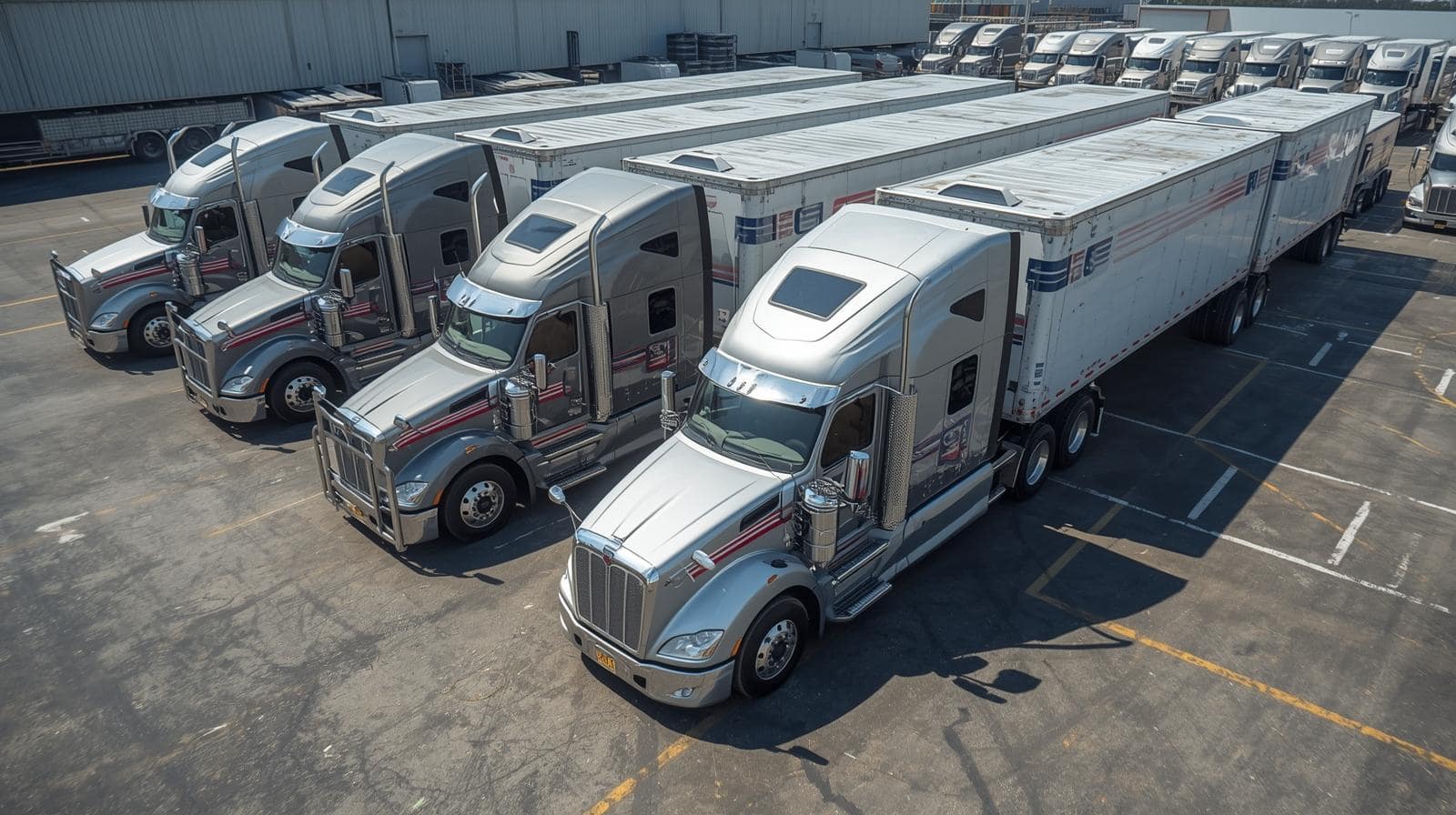Contents
Electronic Logging Devices (ELDs) have completely changed how fleets manage Hours of Service (HOS) compliance. They’ve made tracking driver activity more accurate, simplified inspections, and reduced logbook tampering. But there’s a catch: ELDs also bring new compliance challenges that drivers and fleet managers can’t afford to ignore.
Whether you’re behind the wheel or running a fleet, understanding the most common ELD violations – and how to prevent them – is essential. Mistakes don’t just cost money; they impact CSA scores, disrupt operations, and in some cases, can even take trucks off the road.
This guide breaks down the top ELD violations and gives you practical strategies to stay violation-free.
Understanding ELD Compliance
What Are Electronic Logging Devices (ELDs)?
An Electronic Logging Device connects directly to a vehicle’s engine to automatically record driving time, location, and vehicle movement. These devices ensure accurate HOS reporting and help reduce driver fatigue – improving safety for everyone on the road.
FMCSA ELD Mandate Overview
The Federal Motor Carrier Safety Administration (FMCSA) requires that most commercial drivers who must maintain HOS records use FMCSA-certified ELDs. This mandate’s purpose? Enhance safety, standardize recordkeeping, and make inspections easier.
Why ELD Compliance Matters
Non-compliance comes with serious consequences:
- Fines ranging from hundreds to thousands of dollars.
- Damage to your CSA (Compliance, Safety, Accountability) scores.
- Operational disruptions, including potential out-of-service orders.
Compliance isn’t optional – it’s essential for protecting your business and keeping your trucks on the road.
The Most Common ELD Violations
Here are the violations that inspectors encounter most often during roadside checks and audits:
1. Failing to Use an ELD When Required
Some drivers still use paper logs when they are legally required to use an ELD. Unless you qualify for an exemption (such as short-haul drivers or vehicles manufactured before 2000), this is a serious offense.
2. Incomplete or Missing Log Data
Drivers often forget to log certain on-duty or driving periods. Unlogged time leads to gaps in records, which inspectors quickly flag.
3. Failing to Certify Daily Logs
Drivers must review and certify their logs at the end of each workday. Missing certifications are one of the most common and avoidable violations.
4. Not Carrying Required Documentation
Drivers must always have:
- An ELD user manual.
- Instructions for handling malfunctions.
- At least eight blank paper logs for emergencies.
Failure to produce these during inspections results in violations.
5. ELD Malfunctions and Failure to Address Them
If your ELD malfunctions, you can use paper logs temporarily – but repairs must be completed within eight days. Ignoring malfunctions is a clear violation.
6. Improper Data Transfer to Inspectors
During roadside inspections, drivers must transfer ELD data on the spot. If they can’t do it properly or quickly, it counts as a violation.
7. Using Non-Compliant or Unregistered Devices
All ELDs must be FMCSA-approved and listed on the official registry. Using a non-compliant device puts your fleet at risk of fines and enforcement action.
The Cost of ELD Violations
FMCSA Penalties and Fines
Fines for ELD violations can range from $1,000 to $10,000 per violation, depending on the severity and frequency.
Impact on CSA Scores
Violations don’t just cost money – they lower your CSA scores, increasing insurance costs and potentially triggering closer FMCSA oversight.
Operational Disruptions
Repeat offenders risk being placed out of service, resulting in missed deliveries, angry customers, and significant revenue losses.
How to Avoid ELD Violations
The good news? Most ELD violations are completely preventable.
1. Provide Proper Driver Training
Ensure drivers know:
- How to log duty status changes correctly.
- How to review and certify logs daily.
- How to transfer ELD data during inspections.
2. Conduct Regular Compliance Audits
Perform internal log reviews to identify and fix errors before inspectors do.
3. Keep Devices Updated and Functional
Schedule regular maintenance and make sure your ELD software is always up to date.
4. Choose the Right ELD Provider
Work with a reliable, FMCSA-certified ELD vendor that provides 24/7 technical support and training.
5. Implement Clear Company Policies
Set standardized procedures for:
- Reviewing logs
- Reporting malfunctions
- Preparing for inspections
Tips for Drivers to Stay Violation-Free
- Certify logs daily before your shift ends.
- Report malfunctions immediately to your fleet manager.
- Carry all required documentation (user manual, blank logs, malfunction instructions).
- Practice data transfers to ensure you can handle inspections quickly.
Preparing for Roadside Inspections
What Inspectors Look For
Roadside inspectors typically check:
- ELD functionality and certification.
- English level proficiency.
- Data transfer readiness.
- Driver documentation.
How to Quickly Transfer Data
Practice using your ELD’s data transfer methods (USB, Bluetooth, or telematics) so you can respond confidently during inspections.
Role-Playing Inspections During Training
Simulated inspections help drivers stay calm and confident under real-world conditions.
ELD violations are preventable, but they require awareness, proper training, and clear procedures. By choosing the right devices, keeping them updated, and ensuring drivers know exactly what to do, fleets can stay compliant, avoid costly penalties, and keep operations running smoothly.
Remember: compliance isn’t just about avoiding fines – it’s about safety, efficiency, and protecting your business.
FAQ
1. What is the most common ELD violation?
Failing to certify daily logs and leaving log data incomplete are among the most frequent.
2. How often should drivers certify their logs?
Drivers must review and certify logs at the end of each workday.
3. What happens if my ELD malfunctions on the road?
Switch to paper logs temporarily and arrange for repairs within eight days.
4. Do all drivers need ELDs?
Not all exemptions include short-haul drivers and vehicles manufactured before 2000.
5. Can I use a tablet or smartphone as an ELD?
Yes, as long as it’s FMCSA-certified and properly connected to the vehicle’s engine.












